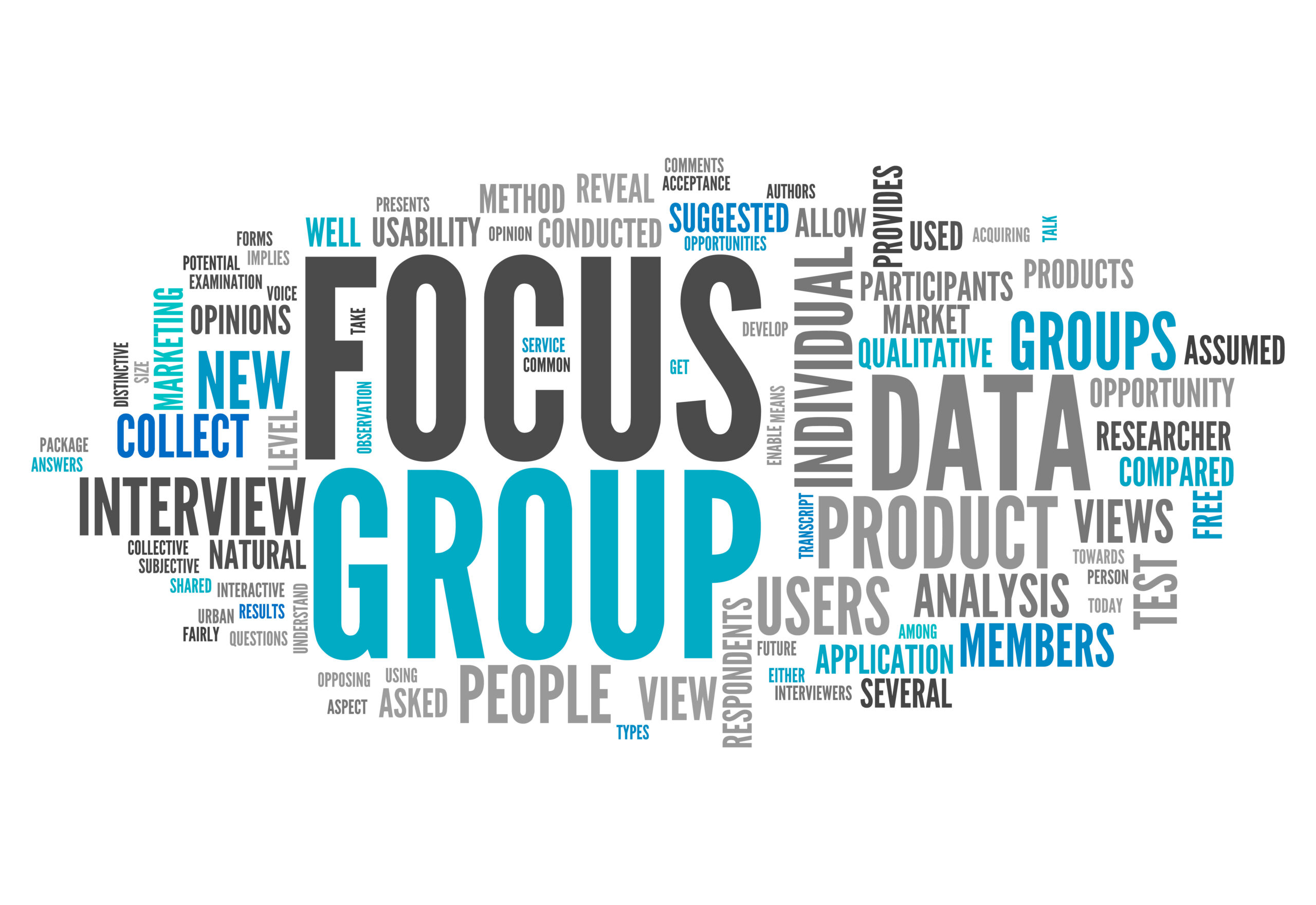Qualitative Market Research: The Complete 2023 Guide
Qualitative market research helps collect key non-numerical data for analysis. Learn the qualitative research benefits, methods, and more.
Content Creators and Social Media Influencers in the Digital Economy
What does the state of influencer marketing look like in 2024? Discover how content creators and influencers are enmeshed in the digital economy....
The Importance of Demographic Survey Questions in Surveys
Learn why a foundational component of surveys is demographic questions, which enable you to understand the nature and characteristics of your respondents...
Introduction
When you’re looking to learn more about your industry or target consumer, market research is the perfect outlet. But there are several different types of market research that can help you get different answers in different ways.
In this article, we’re going to introduce you to qualitative market research, a methodology that can help brands discover things like customer sentiment, product positioning, and so much more.
Discover what qualitative market research is, why and when you should conduct it, plus 10 different ways this type of research can be done.
Let’s get started.
What is Qualitative Market Research?
Qualitative market research is a type of market research that focuses on the collection of non-numerical data. Instead of asking multiple choice questions and analyzing those results as you would with quantitative market research, qualitative research deals with descriptions and sentiments.
There can be overlap in how the two are conducted, but the results and the data analysis are widely different. Qualitative research is used to discover how a group of people feel about something, rather than pinpointing statistics.
Qualitative research is conducted through methods like interviews, focus groups, and observations, some of which can be conducted one-on-one, enabling interviewers and researchers to gather all sorts of information.
Benefits of Conducting Qualitative Market Research
Why use qualitative market research over other types of market research? There are four main benefits that this methodology has over some of the others.
Gather Detailed Data and Information
Qualitative methods enable researchers to gather even more detail about respondents and participants than quantitative and other methods do. Researchers, interviewers, ethnographers, etc., are sitting with the study participants and are able to get tons of detailed and specific information from each one.
More Flexibility and Adaptability
Another major benefit of having the researchers involved directly with participants is that they can adjust and adapt their line of questioning in real time if they realize they’re not getting the types of answers they’re looking for. This is a huge perk over surveys and more hands-off forms of market research.
Better Communication
In open forums like this, the brand researchers and customers are able to communicate clearly and directly with each other, removing as much room for error and miscommunication. Customers can ask questions in order to better understand what’s expected of them and brands can quickly and easily explain what they’re hoping to learn.
Improve Customer Retention
Qualitative research gives you clear cut insights into what your customer base wants to see from a business like yours. By taking this information and using it in your business, product, and marketing strategies, you’re able to keep more customers happy longer.

8 Qualitative Market Research Methods
There are many different ways to get qualitative data for your business. Let’s go through the top eight methods used in conducting qualitative market research.
1. Focus Groups
A focus group consists of anywhere from six to 12 participants who are brought together to discuss an industry, brand, or product. They’ll sit around a table with a moderator who will conduct a demonstration or share some information for the group to discuss.
Focus groups can also be held online, which has become increasingly popular after the pandemic. These are held either synchronously—with all participants on the same video call, keeping the same process as an in-person focus group—or asynchronously—where participants will send in emails and work on providing feedback on their own time.
This methodology is great for testing new product concepts, discussing branding and rebranding ideas, and gathering customer sentiment around a brand or industry.
2. Interviews
Interviews—also called IDIs, or in-depth interviews—are one-on-one interviews with a single participant at a time. These can also be conducted in-person, online, or over the phone, though online/phone interviews are the most common. This allows companies to reach a wide variety of people from different geographic locations.
With this method, there can be more of a conversation between the interviewer and respondent, helping to adapt and adjust the line of questioning based on each response. Interviews are useful for getting granular details about a market segment.
3. Observations
Observational studies typically follow customers along as they shop—though not usually side-by-side. Instead, researchers will go into public places like stores or shopping malls to observe how customers behave naturally while shopping. Or, they can conduct these observations online via camera without having to be in the same place as the shoppers.
This can help brands decide how to set up their stores, if certain shopping malls have enough foot traffic to open a store in their location, and other similar objectives.
4. Ethnography
Ethnography is a more in-depth type of observational study. Ethnographic research can be a long-term or short-term project. But essentially, researchers observe subjects in their natural habitats for an extended amount of time.
Shorter ethnographic studies help brands determine things like exactly how someone might use a product, leading to new features, messaging adjustments, or product changes to make it easier. Longer ethnographic studies can help brands develop new products based on findings of pain points in subjects and discover other latent needs.
5. Online Forums
Online forums are a regular part of many internet users’ repertoire, so this is usually a familiar concept to participants. With this method, researchers will create an online forum specific to their study and invite between 10-50 or so subjects to participate in the forum, reading through threads, asking questions, and responding to discussion points.
Researchers will moderate the forum, looking to see if any additional threads need to be started to gather more information. In the end, they tend to have a good bit of qualitative data from the respondents surrounding their main topic.
6. Surveys
Surveys are often used to gather quantitative data, as this is an easy way to ask multiple choice questions and gather numerical data and statistics. However, open-ended survey questions can be just as effective at gathering qualitative data.
7. Product Testing
Product testing is another great qualitative research method. While products may be tested in a variety of qualitative methods, this one specifically refers to the sending out of products in exchange for feedback on how well they solved a problem or how difficult to use it may have been.
After each participant has tested the product on their own, they can send feedback to the brand via email or document sharing. This helps companies get a feel for how people would use their product so they can make necessary changes to perfect it.
8. Journal Logging
Journal or diary logging is a longer-term project than basic product testing. With this, you’ll allow the user access to your product for as long as the study goes (or they can keep it). Set parameters on how long you want participants to input information into their journal, the types of information you want them to write about, and how often.
You’ll be able to get information like how users felt when working with your product, any issues they had with it, if it was difficult to use, and more.
When to Use Qualitative Market Research
Different market research projects require different techniques for gathering data. But there are a few instances where qualitative methodology can win out in favor of other tactics. Here are four specific use cases for when you might want to use a qualitative research technique.
Product Development
When developing new products or new product features, being able to get feedback directly from your target customer is invaluable. Product testing and ethnographic studies can both be great ways to see your product in action and make sure it’s doing its job properly.
Strategy Building
Regardless of the strategy you’re building—whether it’s an overarching business plan, product strategy, or marketing strategy—qualitative market research can help. Get a clear view of your target customers’ thoughts and insights on your industry and product so you can easily reach them with the right messaging.
Branding/Rebranding
Building your branding or considering a rebrand is a big undertaking. You need to create a brand identity that makes sense for your business but also resonates with your target audience. Through qualitative research methods like focus groups, you can present branding options and get direct consumer feedback on which they like most.
Customer Perception
Qualitative market research can also be used to discover and adhere to customer perceptions of your brand. Using interviews, forums, and focus groups to discover how customers perceive your brand—both positive and negative. Make sure to create policies that help your company stick to positive perceptions while moving away from negative perceptions.

Qualitative Market Research Example
Let’s dig into a qualitative market research project in action and what this type of study might look like. We worked with a cleaning product manufacturer in February of 2023 to pinpoint the best ways to communicate product benefits to the brand’s target audience.
To start, we came up with four key objectives for the project:
- Determine if the product in development would be a viable commercial solution.
- Identify the factors and benefits that most resonated with the key decision makers for each vertical.
- Address key concerns where purchasers needed the most reassurance from product claims.
- Establish if brand trust was as high as anticipated and a primary driver for purchase decisions.
Then we came up with three verticals, or audience segments: offices, education, and retail.
We conducted nine in-depth interviews with respondents that fit into one of the three set verticals.
By analyzing the responses to our interview questions, we were able to provide actionable feedback for the client that hit each of their objectives for the study.
Get Started With Your Next Qualitative Market Research Project
Looking to gather some insights from your own target audience? Let us help you get started with your next qualitative market research project. Get in touch with someone from our team to learn more.

Let's Work on Your Next Qualitative Market Research Project
Get started with your next initiative
Follow
OvationMR

Need help with new insights?
We are ready to offer you:




